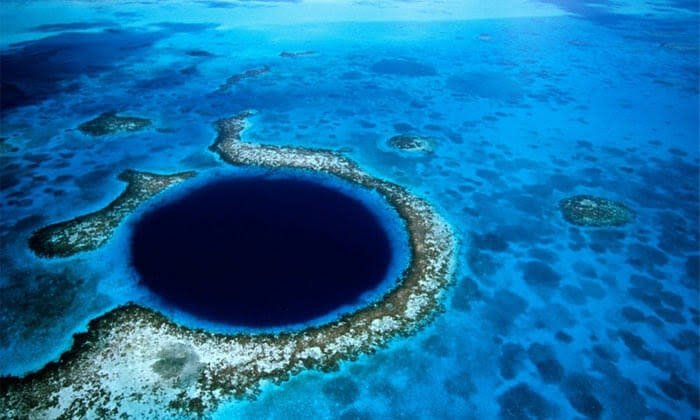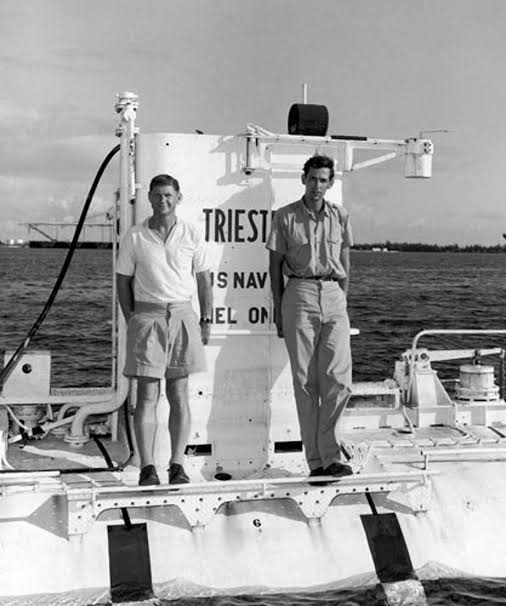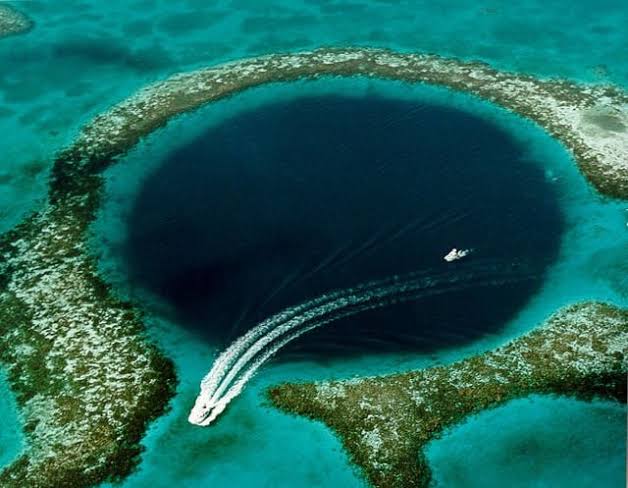Exploring the Mariana Trench: Earth’s Deepest Frontier
Table of Contents
Introduction
The Mariana Trench, earth’s deepest oceanic trench, is a place of mystery and wonder. Situated in the western Pacific Ocean, east of the Philippines and south of Japan, the trench plunges nearly 36,000 feet below sea level. It marks the most extreme environment on our planet, where conditions are so harsh that only specially adapted organisms can survive. The trench has been explored, giving off various scientific findings to the world on its aspect of how life originated, and geological processes regarding earth movements, survival mechanisms of life in extreme pressures and darkness.
Background History
The exploration for the Mariana Trench was initiated in the late 19th and early 20th centuries. It is during 1875 when the depth of the trench was measured first by the HMS Challenger expedition. The expedition of the Challenger led to deep-sea exploration and contributed much to the development of oceanography. In 1951, the British survey ship HMS Challenger II confirmed the existence of the deepest part of the trench, which is now called the Challenger Deep.
The most prominent manned dive to the trench was in 1960 when Jacques Piccard and Don Walsh took the Trieste bathyscaphe to a depth of 35,814 feet. Such a dive proved that is possible for humans to explore extreme environments. Today, decades later, in 2012, filmmaker James Cameron made a solo dive to the Challenger Deep, which brought renewed interest in this trench to apply for scientific exploration of its potential.

Geological Features
The crescent-shaped scar in the Earth’s crust created by the subduction of the Pacific Plate into the smaller Mariana Plate is considered to be in the shape of the Mariana Trench. Such a tectonic process creates a trench about 1,550 miles long and 45 miles wide. Its steep sides and deep floor are characterized by mud volcanoes, hydrothermal vents, and cold seeps, representing distinctive geological formations and chemical properties.
The geology of the trench goes on to give an indication of some of the processes that work in our planet. The subduction zone where the two parts of the tectonic plates converge is an area of very intense geological activity in terms of both earthquakes and volcanic eruptions. Scientists believe that studying areas like these will help them understand plate tectonics, the Earth’s mantle, and how materials get recycled between the Earth’s surface and its interior.

The Challenger Deep
The southern end of the Mariana Trench is recorded to be Earth’s deepest point in terms of depth-a little over 36,000 feet. The place is described to be an abyssal zone characterized by eternally dark temperatures and pressures so strong that anything other than a few materials could be crushed. This extreme condition didn’t stop the focus on scientific exploration.
Diversions of the most famous expeditions to the Challenger Deep include the Trieste dive that happened in 1960, James Cameron’s plunge in 2012, and recent five deep expeditions conducted by Five Deeps Expedition and Victor Versova. The expeditions have offered much scientific information and samples that confirmed the fact that this is the most hostile environment on earth, and yet organisms thrive.

Sea Life in Mariana Trench
There are different groups of specially adapted organisms existing and surviving in the extreme environment of the Mariana Trench. Deep-sea creatures have interesting adaptations like bioluminescence and the pressure-resistant cellular structures or unique feeding mechanisms. The snorkel fish and deep-sea amphipod Irondale gigas are two species living beyond 30,000 feet, while the mysterious snailfish only lives down to 26,000 feet.
Deep-sea microbes play vital roles in the ecosystem of the trench. They live near cold seeps and hydrothermal vents. There, they thrive on chemicals, such as hydrogen sulfide and methane, for energy. The study of these extremophiles opens up avenues of knowledge for the survival capabilities of life elsewhere in the solar system and also how life can exist in extreme settings.

Technological Innovation: Ocean Exploration
Advancements in technology have transformed how we can explore the Mariana Trench. Equipped with imaging systems, sampling tools, and sensors, submersibles and ROVs have let scientists analyze the trench in an unprecedented degree of detail. For example, Japan’s Agency for Marine-Earth Science and Technology (JAMSTEC) ROV Keiko have greatly contributed to our understanding of the geological and biological aspects of the trench.
New research is continually pushing the boundaries of deep-sea exploration. In mapping the topography of the trench, advanced AUVs and improved sonar systems are permitting better son denning of these features. These technologies are critical in the acquisition of high-resolution data and long-duration missions in the challenging environment of the trench.

Scientific Discoveries
The explorations of the Mariana Trench have led to many scientific discoveries which have increased our knowledge about the deep ocean. One of these is the discovery of hydrothermal vent communities that subsist not through photosynthesis like other living organisms, but chemosynthesis. Third, discovery of unique deep-sea species and novel adaptations were discovered. Consequences would be involved in the whole scope of things, from the marine field to astrobiology.
From the peculiar chemical conditions of the trench much has been learnt about biogeochemical cycles and life may exist under extreme habitats. Scientists have established that deep-sea microbes play a vital role in the degrading large organic compounds and nutrient cycling that contributes to a healthy ocean ecosystem.

Human Efforts and Data
It has been subjected to human exploration. Several achievements and records were acquired in the Mariana Trench. One of the most significant milestones in deep-sea exploration was marked by Jacques Piccard and Don Walsh when they dived into the bathyscaphe Trieste in 1960. In 2012, James Cameron set a record for the deepest solo dive in the Deepsea Challenger submersible at a depth of 35,787 feet.
More recently, Victor Versova’s Five Deeps Expedition successfully completed multiple dives to the Challenger Deep as well, in attempting the deepest manned sea dives in human history. These expeditions have advanced our understanding of the trench, but also demonstrated the capabilities of modern deep-sea exploration technology.

Environmental Concerns
Even though the Mariana Trench is very far off, it is not immune to the impacts of man. The example that has been discovered is the presence of microplastics and other chemical wastes in the deepest areas of the trench-that human waste can be really extensive. Microplastics in deep-sea organisms raise huge health implications on the long term health of the ecosystem in the trench.
The only thing that can protect the Mariana Trench from further degradation is conservation efforts and international regulations. For example, programs like marine protected areas and responsibility in fishing practices will help preserve unique biodiversity in this trench and maintain ecological balance.
The role of the Mariana Trench in Earth’s Ecosystem
On the Earth’s side, in the case of the global ocean circulation, Mariana Trench plays a significant role. The organic carbon acts as a sink in the case of the trench and supports the control over the global carbon cycle in the ocean that takes place to prevent climate change. A different variety of species thrives because of the unique habitats in the trenches, making the overall biodiversity of the ocean possible.
Ecosystems in a trench can offer an opportunity to gain specific insights about the adaptability of life and how deep-sea environments function. For example, research on organisms-environment interactions in a trench could inform strategies for conservation efforts and improve our capacity for managing and protecting deep-sea ecosystems worldwide.

Cultural and Mythological Significance
The Mariana Trench has captured the human imagination and evoked diverse cultural and mythological stories. In folklore, the trench was full of mysterious danger; there, sea monsters and mythical creatures are said to thrive. Such accounts demonstrate the deep fascination and awe that such an extreme environment of the trench embodies.
It also stretches into literature and media, in books, films, and documentaries. Works like “Twenty Thousand Leagues Under the Sea” by Jules Verne and films like “The Abyss” will continue to advance those ideals of deep-sea exploration and introduce wonder to the trench for a worldwide audience.
Future Outlook for Exploration
Future exploration of Mariana Trench may promise a lot as many missions and research initiatives have lined up to discover the secrets of this trench. Better technology, especially improved submersibles, AUVs, and deep-sea sensors, will present ways toward more detailed studies of the geology, biology, and chemistry of the trench.
International cooperation and funding assistance will also ensure that large-scale expeditions are explored, and the fruits of research in deep waters are spread all over the globe. However, it will demand concerted efforts from the research institutions, governments, and private organizations.

Challenges of Deep-Sea Exploration
Exploration of the Mariana Trench poses tremendous technical and logistical difficulties. It is a hostile environment, as far as humans are concerned, due to extreme pressure and low temperatures, coupled with the absence of light. The challenges will be to ensure that these manned vehicles and unmanned vehicles, respectively, do not place a human diver’s life in danger and, if unmanned, are correctly designed to execute the desired mission.
This includes logistical matters, like the deployment and recovery of submersibles and samples collection. These are also problems that need to be addressed in order to carry out successful research within the trench, meaning research that is of value.
International collaboration
International collaborations are also essential in the advancement of deep-sea exploration as well as understanding the Mariana Trench. Pooling resources and shared knowledge from different countries can help coordinate research efforts across institutions. With global partnerships, the complex challenges surrounding deep-sea exploration with responsible use of ocean resources can be better addressed.

Conclusion
One of the last frontiers on Earth is the Mariana Trench-an environment of unparalleled mystery and scientific potential. Exploration of this abyssal region has brought to light amazing discoveries as well as new and exciting insight into the resiliency of life, the processes that shape our planet, and the interconnectedness of Earth’s ecosystems. As we continue to push deeper into the reaches of the deep sea, the Mariana Trench will continue to be at the center of scientific inquiry, technological innovation, and international collaboration.
FAQ
What is the Mariana Trench?
The Mariana Trench, located in the western Pacific Ocean, is the deepest oceanic trench on the planet. It reaches depths of nearly 36,000 feet. It is located there that feature extreme conditions: high pressures, low temperatures, and absolute darkness.
How deep is the Challenger Deep?
The Challenger Deep is the lowest area in the Mariana Trench, which reaches about 36,000 feet down. It’s actually the deepest known point on Earth in the oceans.
Which technologies are used for exploration of the trench?
Advanced technologies, such as submersibles, remotely operated vehicles, and autonomous underwater vehicles, are used in the exploration of the Mariana Trench. These tools also carry imaging systems, sampling instruments, and sensors to provide observation of the geology, biology, and chemistry of the trench.
Why is the Mariana Trench so important for scientific study?
The Mariana Trench allows scientists to gain some insights into how life persists under conditions that are extreme, geological processes which build our planet, and the workings of deep-sea ecosystems. The study of the trench could provide and enhance the basis of conservation strategies, insights into the global ocean circulation on Earth, and a better understanding of biodiversity.




